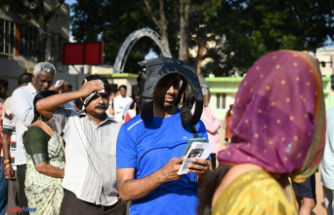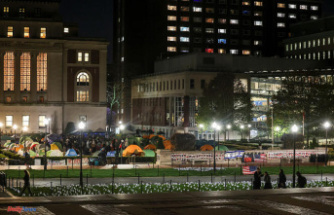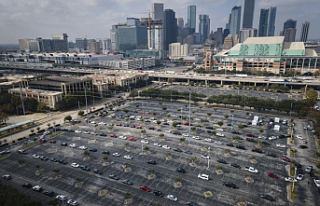One first responder was injured and six more were hurt. However, Boulder County Sheriff Joe Pelle said that there may have been more deaths and injuries due to the intense firestorms that quickly swept through the region. Wind gusts up to 105 mph (169 km/h)
Pelle stated that the first fire broke out just before 10:30 AM. It was "attacked quickly and laid down later in day, and is currently being monitored", with no structures damaged.
Pelle stated that a second wildfire was reported shortly after 11 a.m. It "ballooned" and "spread rapidly east." The fire spanned 2.5 miles (6.5 kilometers) and engulfed large areas of the area with smoky orangish skies, leaving residents scrambling for safety.
The wind conditions overnight will determine the activity of the fires that are unusually active late in the winter season. This could affect when crews can go in to assess the damage and search for victims.
Pelle stated, "This is the type of fire that we can't tackle head-on." He said that there were firefighters and deputy sheriffs in the area, but they had to be pulled out as they had become overwhelmed.
Evacuations were ordered for Louisville, which is home to approximately 21,000 people, as well as Superior, which houses another 13,000.
Nearby towns are located approximately 20 miles (32 km) north of Denver. They are surrounded by shopping centers and parks, and are home to middle- and upper-middle class subdivisions. This area lies between Denver and Boulder, Colorado's foothills college town.
Although residents evacuated calmly and in order, the streets of the suburbs quickly became blocked by people trying to escape. Sometimes, it took 45 minutes for cars to travel a quarter mile (less than one kilometer) in some cases.
As wind gusts caused fire to spread, small fires sprung up in unexpected places -- in the median grass or in a dumpster at the end of a parking lot -- and they quickly spread. Shifting winds caused clouds to change from clear to smokey and back again, as emergency sirens were blared nearby.
Downed power lines were the catalyst for some of the fires that erupted in the region on Thursday.
Kelli Christensen, spokesperson for UCHealth Broomfield Hospital said six people were treated at the hospital after being injured by the fires. Another section of U.S. Highway 36 was also closed.
Colorado's Front Range, home to most of the state’s residents, experienced a mild and extremely dry fall. Winter so far has been mostly dry. Denver was the first place to have no snow for more than ten consecutive days before it experienced a storm on December 10. Although it hasn't snowed in the area since then, snow was predicted for Friday.
A video taken by a passerby outside Superior Costco showed an apocalyptic scene, with winds blowing through barren trees in the lot. The area was surrounded by gray skies and small fires.
After being away for the holidays, Leah Angstman saw similar dark skies as her husband when they returned to their Louisville home via Denver International Airport. Angstman, as they sat on the bus heading towards Boulder, recalled immediately leaving clear blue skies to enter clouds of yellow smoke.
She wrote that "the wind rocked my bus so hard that it seemed the bus would tip," in a message to The Associated Press.
They had to pull over because of the poor visibility. After waiting half an hour, a van from the regional transit authority escorted them onto the highway. She said she saw four fires in the bushes along the freeway.
She said, "The sky was dark and dark brown, and dirt was blowing in swirls along the sidewalk like snakes."
Angstman ended up getting out of her house, driving north with her husband, and then evacuating.
Vignesh Kasinath was an assistant professor of biochemistry at University of Colorado in Boulder. He evacuated with his wife and parents from Superior. Kasinath stated that the family was overwhelmed by the emergency evacuation warning and was anxious about trying to flee the chaos.
Kasinath stated that he didn't receive an evacuation notice from authorities.
Governor. Jared Polis declared a state emergency, which allowed the state to access disaster funds.
Scientists say climate change is making wildfires more destructive and extreme, and the need for evacuations is increasing. Wildfires in the West have become more difficult to combat due to a drought and heat wave.
Ninety percent (90%) of Boulder County are in extreme or severe drought and haven't had significant rainfall since mid-summer.
"With any snow on ground, this absolutely wouldn't have happened in that way," stated Keith Musselman (snow hydrologist), who was home at the time the fire broke out.
Musselman stated that severe fire risks can be expected in September or October after a dry summer. However, the absence of precipitation - rain or snow - at this time is extremely unusual.
According to Musselman, Boulder could see up to a foot in snow tomorrow. That moisture will bring significant relief.












